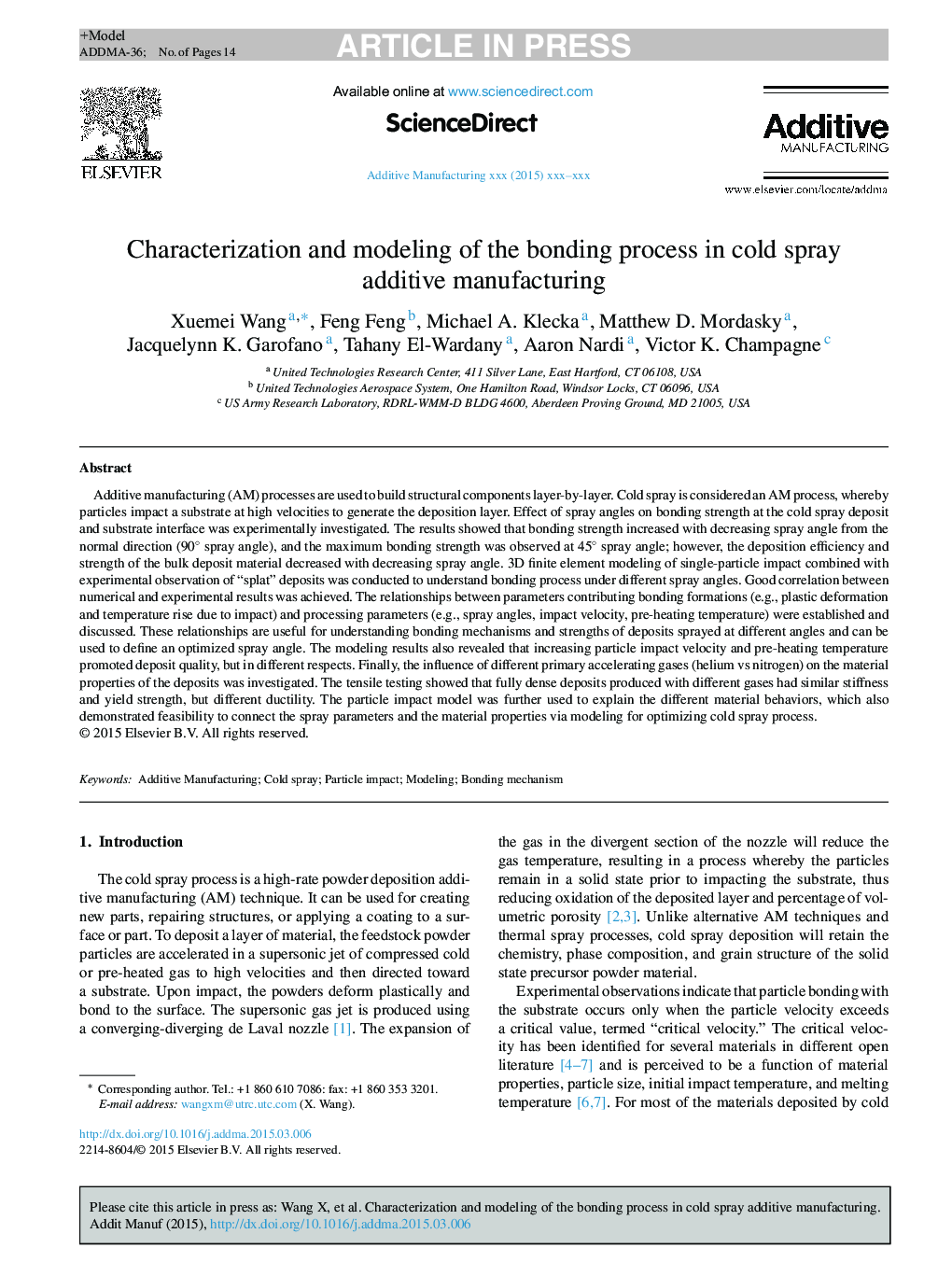| کد مقاله | کد نشریه | سال انتشار | مقاله انگلیسی | نسخه تمام متن |
|---|---|---|---|---|
| 7206016 | 1468640 | 2015 | 14 صفحه PDF | دانلود رایگان |
عنوان انگلیسی مقاله ISI
Characterization and modeling of the bonding process in cold spray additive manufacturing
ترجمه فارسی عنوان
خصوصی سازی و مدل سازی فرایند پیوند در تولید مواد افزودنی اسپری سرد
دانلود مقاله + سفارش ترجمه
دانلود مقاله ISI انگلیسی
رایگان برای ایرانیان
کلمات کلیدی
تولید افزودنی، اسپری سرد تاثیر ذرات، مدل سازی، مکانیزم پیوند
موضوعات مرتبط
مهندسی و علوم پایه
سایر رشته های مهندسی
مهندسی صنعتی و تولید
چکیده انگلیسی
Additive manufacturing (AM) processes are used to build structural components layer-by-layer. Cold spray is considered an AM process, whereby particles impact a substrate at high velocities to generate the deposition layer. Effect of spray angles on bonding strength at the cold spray deposit and substrate interface was experimentally investigated. The results showed that bonding strength increased with decreasing spray angle from the normal direction (90° spray angle), and the maximum bonding strength was observed at 45° spray angle; however, the deposition efficiency and strength of the bulk deposit material decreased with decreasing spray angle. 3D finite element modeling of single-particle impact combined with experimental observation of “splat” deposits was conducted to understand bonding process under different spray angles. Good correlation between numerical and experimental results was achieved. The relationships between parameters contributing bonding formations (e.g., plastic deformation and temperature rise due to impact) and processing parameters (e.g., spray angles, impact velocity, pre-heating temperature) were established and discussed. These relationships are useful for understanding bonding mechanisms and strengths of deposits sprayed at different angles and can be used to define an optimized spray angle. The modeling results also revealed that increasing particle impact velocity and pre-heating temperature promoted deposit quality, but in different respects. Finally, the influence of different primary accelerating gases (helium vs nitrogen) on the material properties of the deposits was investigated. The tensile testing showed that fully dense deposits produced with different gases had similar stiffness and yield strength, but different ductility. The particle impact model was further used to explain the different material behaviors, which also demonstrated feasibility to connect the spray parameters and the material properties via modeling for optimizing cold spray process.
ناشر
Database: Elsevier - ScienceDirect (ساینس دایرکت)
Journal: Additive Manufacturing - Volume 8, October 2015, Pages 149-162
Journal: Additive Manufacturing - Volume 8, October 2015, Pages 149-162
نویسندگان
Xuemei Wang, Feng Feng, Michael A. Klecka, Matthew D. Mordasky, Jacquelynn K. Garofano, Tahany El-Wardany, Aaron Nardi, Victor K. Champagne,
